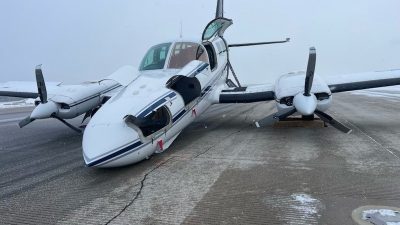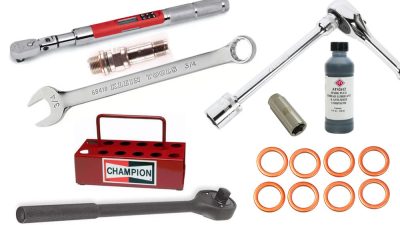Purchasing an aircraft is a significant investment, often totaling tens or even hundreds of thousands of dollars. If you’re considering buying a used airplane, it’s crucial to ensure that every component is in optimal condition before you sign on the dotted line. The best way to do this? Hire a qualified aircraft mechanic to perform a thorough pre-buy inspection. Skipping this step is like gambling with your money and safety — a risk you don’t want to take.
The Risks of Skipping a Pre-Buy Inspection
Buying an aircraft without a pre-buy inspection is akin to rolling the dice. While the aircraft might look pristine on the outside, its internal components are what truly matter. If you’re not an experienced aircraft mechanic, you might miss underlying issues that could lead to costly repairs down the road. Imagine purchasing your dream plane, only to find out at your next inspection that you need a complete engine overhaul. Depending on the engine, this repair alone could cost anywhere from $25,000 to over $75,000 or more.
Used airplanes are almost always sold “as-is,” meaning the seller provides no warranty. Once the sale is final, any repairs or hidden issues become the buyer’s responsibility. Therefore, a pre-buy inspection is more than a formality — it’s an essential step to safeguard your investment.
Key Points to Consider Before Purchasing a Used Aircraft
- Choose an Independent Mechanic
Never rely on the seller’s mechanic to perform your pre-buy inspection. Find an independent, trusted mechanic with experience in the specific aircraft type you’re interested in purchasing. An unbiased inspection by a knowledgeable professional can give you confidence in the plane’s condition or help you negotiate repairs or a lower price. - Use a Purchase/Sales Agreement
Protect yourself by using a formal aircraft purchase agreement. This contract should specify the terms of the sale, including the condition of the aircraft at purchase and any agreed-upon repairs. A clear, legally binding contract can prevent misunderstandings and protect both parties if issues arise after the sale. - Take a Demo Flight
A demo flight is crucial before making a final decision. During this flight, test the aircraft’s systems, controls, and overall performance. A flight gives you the chance to assess handling, engine performance, and how well the aircraft aligns with your expectations. - Request FAA Records
For just $10, you can order a CD from the FAA containing all recorded documentation associated with the aircraft’s tail number. This can include details about past ownership, maintenance records, and potentially, any damage history. This small investment can offer significant insights into the aircraft’s history. - Conduct a Tail Number Search
Take a few minutes to search the aircraft’s tail number online. Accident and incident reports are often available, and any red flags you uncover can save you from potential problems or unexpected costs. Understanding the plane’s history will help you make a more informed decision. - Consider an AOPA Title Search Package
The Aircraft Owners and Pilots Association (AOPA) offers a title search package for $95, which includes a title search, access to aircraft records, and any known accident or incident history. This is a worthwhile step to ensure that there are no liens or unresolved legal issues associated with the aircraft.
Common Issues Uncovered in Pre-Buy Inspections
Aircraft pre-buy inspections frequently reveal issues that may not be immediately visible but can lead to costly repairs. Here are some typical findings:
- Corrosion: Corrosion, particularly in older aircraft, is a common issue that can affect both the airframe and internal components. It’s often found in hidden areas and can be expensive to fix.
- Engine Condition: The engine is the heart of the aircraft, and any issues here are often costly. Checking engine compression, oil analysis, and logbook consistency is critical.
- Avionics: Avionics systems can quickly add up in repair costs if they’re outdated or malfunctioning. Ensuring the avionics are up-to-date and operational is essential.
- Landing Gear and Structural Integrity: Problems with landing gear or the aircraft structure can indicate wear and tear from previous operations. This is especially important for planes used in training or other intensive operations.
Final Thoughts
Purchasing an aircraft is an exciting step, but it’s also a major commitment that requires careful consideration. Taking the time to conduct a thorough pre-buy inspection, research the aircraft’s history, and ensure all paperwork is in order can save you from unexpected repairs and financial loss. Remember, it’s always better to discover an issue before buying than after.
If you have any questions about the purchasing process or want advice on finding a reputable mechanic, feel free to ask in the comments section below.



